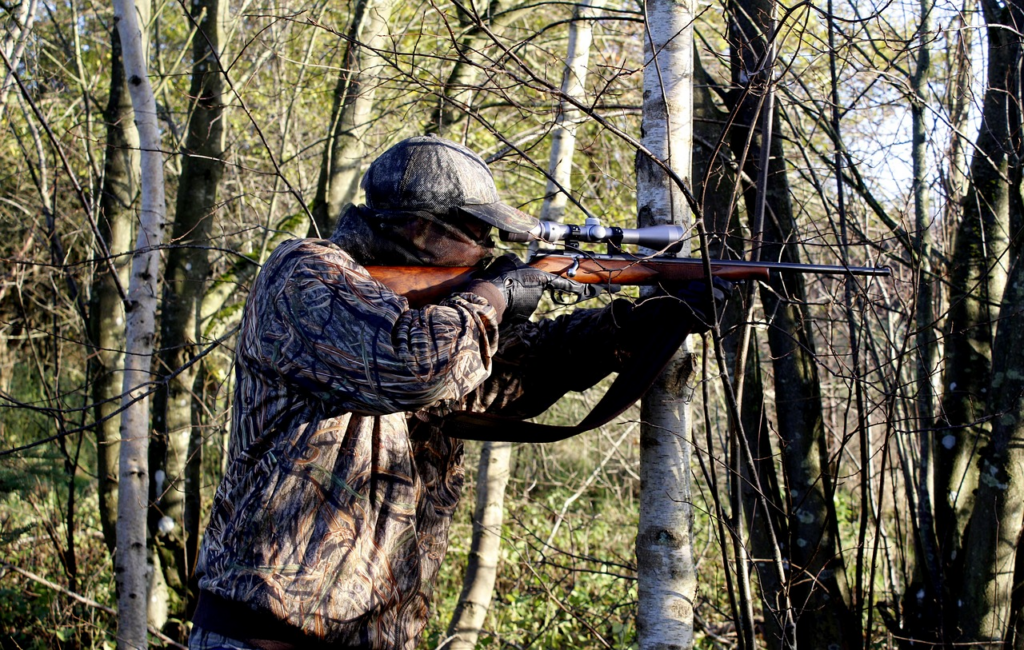When it comes to hunting, clothing isn’t just a matter of fashion or function; it’s survival. You’re up against the elements, testing your patience and convincing yourself that it’s worth it to wake up at an hour so ungodly that even the sun has second thoughts.
The wrong choice of clothes can turn a promising hunting trip into an exercise in misery. Cold, damp, or itchy, take your pick, none of these conditions will improve your odds of success or keep your spirits high.
You need gear that works harder than you do. Hunting clothes aren’t there to make you look cool in a selfie with your dog. They’re your first line of defense against hypothermia, a case of “wildlife sees me before I see it,” and the peculiar chafing that makes you question all your life choices.
What you wear matters, from your head down to your toes.
So, before you head into the woods armed with optimism and a questionable forecast, let’s talk strategy. Here are five key points to consider when choosing hunting clothes, ensuring you stay warm and dry.
Layering
When it comes to mens hunting clothes, layers are the foundation of any good hunting wardrobe. Start with a moisture-wicking base layer to keep sweat from turning you into a human icicle. Synthetic fabrics or merino wool are the way to go; cotton will betray you when you start sweating.
Your mid-layer should provide insulation, trapping heat without making you feel like a baked potato. Fleece or down work well here, depending on the temperature. Avoid anything bulky that might restrict your movement. If you’re wrestling with your sleeves every time you raise your arm, you’ve already lost half the battle.
Finally, your outer layer needs to shield you from wind and rain. Look for something waterproof and breathable—like a good friend, it should support you without suffocating you. Make sure it’s quiet, too. The sound of rustling fabric can scare off more games than poorly timed sneezing.
Camouflage
You don’t need to look like a bush has swallowed you to be effective. Camouflage is about breaking your outline, not transforming you into a shrub. Choose a pattern that matches the environment you’ll be hunting in. Woodland camo won’t do you much good in a snowy field, and vice versa.

Pay attention to your movement. Even the best camo can’t hide you if you’re waving your arms around like you’re directing traffic. Stay still when possible and move deliberately when you have to. The human eye is drawn to motion, and wildlife isn’t different.
Don’t forget your face and hands. A camo mask or face paint can make a big difference, especially when the rest of your outfit is dialed in. Gloves should match your camo pattern or be a neutral color.
Boots: Where the Rubber Meets the Trail
Your boots are arguably the most important part of your hunting attire. A bad pair can ruin your day faster than forgetting your ammo. Look for waterproof boots with good insulation and ankle support. You’ll thank yourself when slogging through mud or trekking over uneven terrain.
Fit is crucial. Boots that are too tight will cut off circulation, while loose ones will give you blisters. Wear the same socks you plan to use for hunting when trying on boots. A good pair of wool socks can make all the difference in comfort and warmth.
Break in your boots before the big day. Give them a few test runs, even if it’s just pacing your yard like a weirdo.
Weatherproofing
Rain and cold don’t mix well with enthusiasm. Invest in a quality waterproof jacket and pants. Gore-Tex or similar materials are worth the extra cost; they’ll keep you dry without making you feel like you’re wearing a sauna suit.
Don’t underestimate the importance of waterproof gloves and a hat. Heat escapes quickly through your extremities, and there’s nothing worse than fumbling with wet fingers when you’re trying to load your rifle. A wide-brim hat or a hood with a drawstring can help keep rain from running down your neck.
Carry a packable rain poncho as a backup. Even the best gear can fail, and a poncho can double as a ground cover or makeshift shelter if needed.
Accessories
The small things often make the biggest difference. A good hunting belt can keep your pants up and hold your gear. Choose one with adjustable straps and a sturdy buckle; flimsy belts are as useful as a screen door on a submarine.
Don’t skimp on socks. Cheap ones will leave you with soggy, frozen feet, and you’ll spend the day dreaming of a hot bath instead of focusing on the hunt. Invest in high-quality wool or synthetic socks designed for outdoor activities.

Lastly, think about storage. Jackets and pants with plenty of pockets can save you from digging through your pack whenever you need something. Just don’t overload them; the sound of clinking gear is a surefire way to announce your presence to every animal within a mile.
Conclusion
Choosing the right hunting clothes is as much about preparation as comfort. It’s a balance of staying warm without overheating, staying dry without feeling suffocated, and blending in without turning into a walking ghillie suit. Hunting isn’t just a hobby; it’s a test of endurance and patience, and your ability to dress like your life depends on it—because it often does.
So, before you head out, take a moment to assess your gear. Remember, the right clothes can’t guarantee a successful hunt, but the wrong ones can all but ensure a miserable day. Dress smart, stay warm, and tell the forest you mean business. And if all else fails, you’ll look good doing it.



